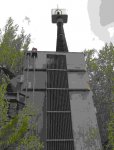I agree with W9BU that many hams over buy SWR meters; its as if you must have the highest end antenna analysi'zer to insure success. An SWR meter is simply a device that indicates forward v.s reflected power. Its up to the operator using their wits to determine what those numbers mean, and to use the device properly.
.
That said, all power ratio meters (aka SWR meters) are not created equal. As the frequency increases, physics starts to play some dirty tricks. Introducing a meter into a line can cause miss matches, which of course can affect the readings, The meter itself by virtue of its design can have factionated wavelength components that can give very erroneous readings-- a case in point: try and use one of those inexpensive meters sold for CB to adjust a, say 440Mhz antenna.... a guaranteed heart breaker.... they work fine for HF up to 50 Mhz, but don't take them higher.
.
I have several meters- my work place standards are four beautiful Bird 43P's- and these are not to be confused with SWR meters-- the Birds are watt meters, although everyone knows reversing the slugs shows the reflected power. Even for laboratory use, they are sometimes overkill... in the field, about 95% of the time a simple (cheaper) meter would work fine.
.
Not long ago one of these 43's went missing during a field trial-- the meter and its expensive slug collection. No fingers were being pointed- stuff like that happens- but I had to write up a property loss, and submit it to the guys "without a sense of humour"

.
Before any water boarding was done, the meter was found; it was just overlooked in the trunk of a vehicle- but it got me thinking about why we were taking thousand dollar meters (when you add in the slugs) out of the lab. So I went on Amazon and bought a couple of Nissei (RS40, 140-500 Mhz) and some assorted other SWR meters for a fraction of the Bird costs. Comparing them side by side they're readings were very precise. Every one now has their own--- and if a meter comes to grief, petty cash can cover the loss,- the Birds only go out when they are truly needed.
.
The ham that likes to build - 'homebrew'- can certainly construct a bridge that rivals anything expensively commercial. I have old ARRL Handbooks showing just such designs- dating back to a time period where amateurs either built it or went without. I would suggest to anyone serious about antennas to take a scientific approach to this SWR topic, and research it throughly; maybe look into building their own- and don't think that that meter will magically fix antenna woes.
.
Want a challenge? I'll leave you to ponder the measuring SWR's at the ++ W Band Microwaves. If you've a good, simple way, Private Message me.... I'm struggling here... (laffing)

.
............................CF



